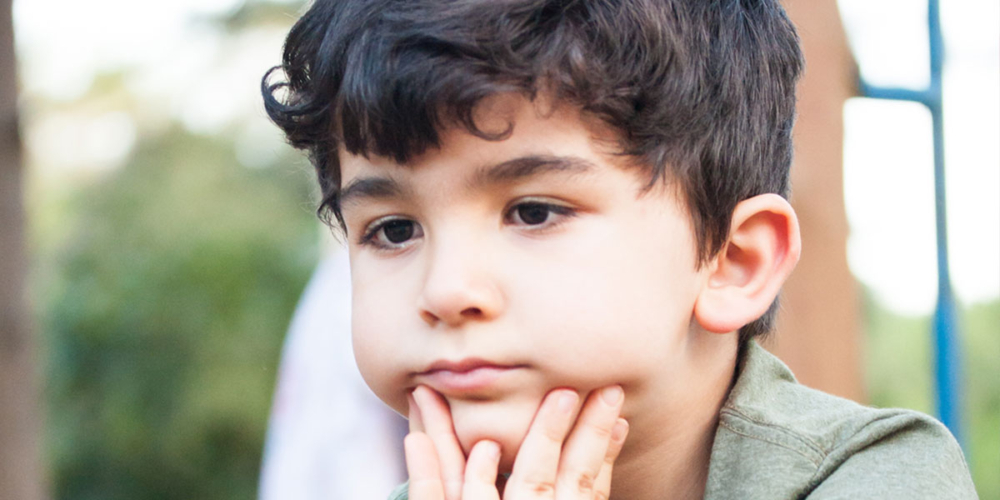Recognize & Prevent



Signs & Symptoms of
Child Abuse
New Fears
An abused child or teenager may develop new fears of situations, places, or people. They may become shy, anxious, scared or withdrawn.
Sleeping Patterns
The inability to sleep, difficulties staying asleep and/or nightmares may develop due to the trauma caused by abuse.
School Performance
Abuse may cause an inability for a child to concentrate, which can directly affect his/her school performance, grades and behavior.
Emotional Behaviors
Be aware of any emotional changes you may begin to see in your child that are outside the norm – whether it’s anger, frustration, shyness, etc.
Eating Habits
If abuse has occurred, a child may begin to show a disinterest in eating and a sudden loss of appetite or may cope by overeating.
Loss Of Boundaries
A child or teen may be overly friendly and attached to total strangers, tolerate abuse from other children or become overly obedient.
Inappropriate Sexual Behaviors
A child experiences a range of sexual behaviors depending on age. Any behaviors that are unusual for the child’s age range may be a sign of abuse.
Lack Of Personal Hygiene
Lack of personal hygiene can be a sign of neglect, including obvious malnourishment, consistently dirty clothes, attachment disorders and more.
Self Destructive
A child or teen may feel guilt and shame from abuse and begin hurting themselves; including hitting/cutting, drugs, alcohol or even a suicide attempt.
How to Prevent Child Abuse
Learn the Facts
1 in 10 children will be sexually abused before their 18th birthday.
Recognize the Signs
Kids don’t always tell us they’re being abused. Learn the signs of abuse to help protect children from further harm.
Minimize Opportunity
Eliminate or reduce isolated, one-on-one situations to decrease the risk for abuse. Abusers often become friendly with potential victims and their families – this is called grooming.
React Responsibly
Understand how to respond to risky behaviors and suspicions or reports of abuse. Help children by giving them a voice.
Talk About It
Have open conversations with children about our bodies, sex and boundaries. Observe and listen to your child and let them know it’s ok to say “no” in uncomfortable situations.
Take the Next Step
The next step is to educate yourself on all forms of abuse. To learn specific strategies and tips, please visit our Education Services Page to sign up for a free prevention training.


For additional information on preventing child abuse, explore our free child abuse prevention trainings.
Additional Resources to Help
The Center for Child Protection works with children and families referred by law enforcement and Child Protective Services. If you need assistance but have not been referred to the Center, please contact one of the organizations below to find out more about how they can help your family.
Counseling
- Austin Child Guidance Center
512-451-2242 - Austin Men’s Center
512-477-9595 - Capital Area Counseling
512-302-1000 - Center for Child Protection
512-472-1164 - ATCIC Child and Family Services
512-472-4357 - Hyde Park Baptist Counseling Center
512-451-2186 - LifeWorks
512-735-2400 - SafePlace
512-267-7233 - The Timothy Center
512-331-2700 - Travis County Counseling Center
512-854-9540 - Upbring
512-459-1000 - Waterloo Counseling Center
512-444-9922 - YWCA Counseling and Referral Center
512-326-1222
Crisis Services
- Austin Travis County Integral Care (PES)
512-472-4357 - Travis County Sheriff’s Office Crisis Intervention Team
512-854-3430 - Integral Care Crisis Hotline (formerly MHMR)
512-472-4357 - SafePlace
512-267-7233 - Runaway Hotline
1-800-989-6884 - Texas Advocacy Project
1-800-374-4673 - Family Violence Legal Hotline
Austin area - Family Law Hotline 800-374-4673
Austin area - Victim Services
512-974-5037




